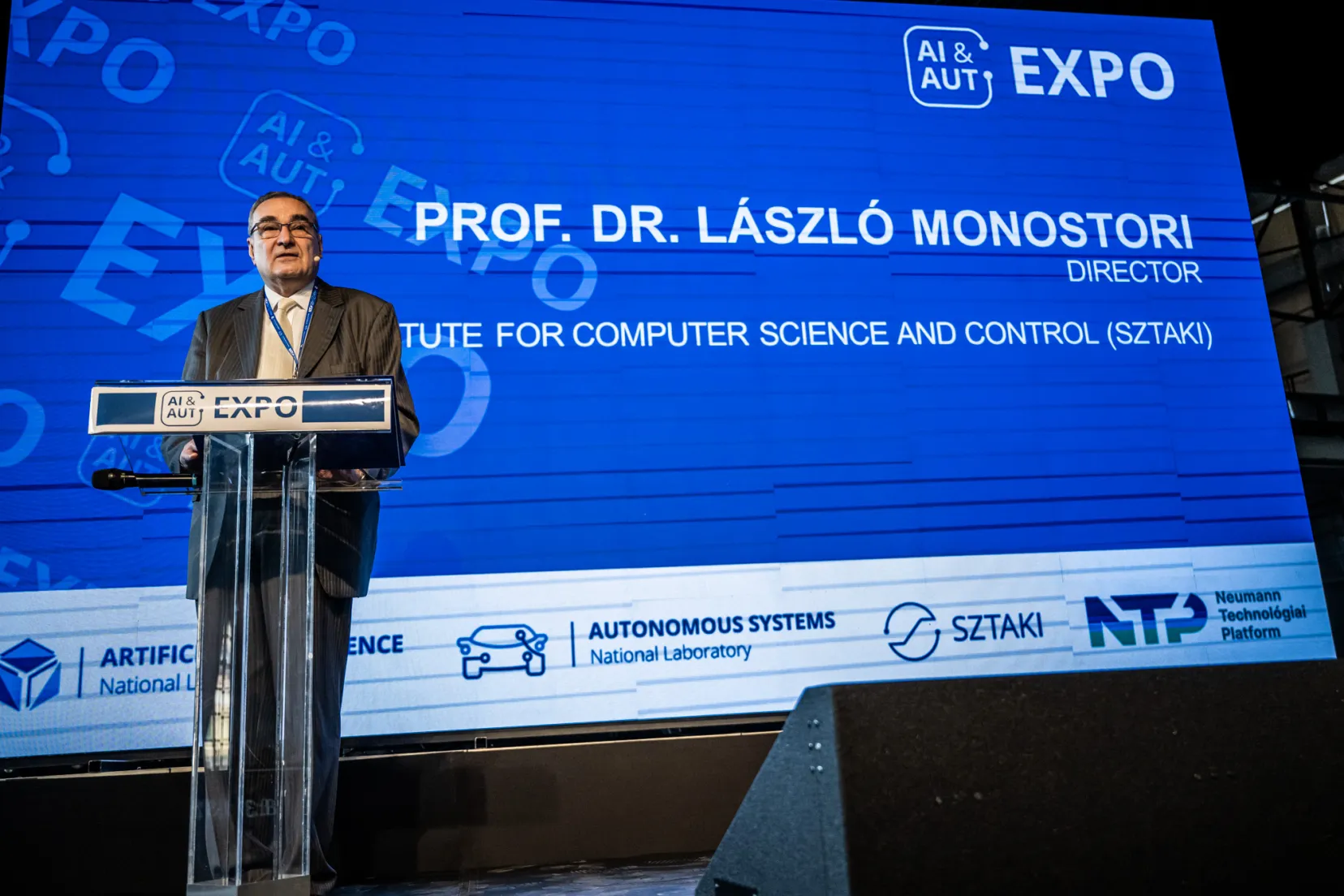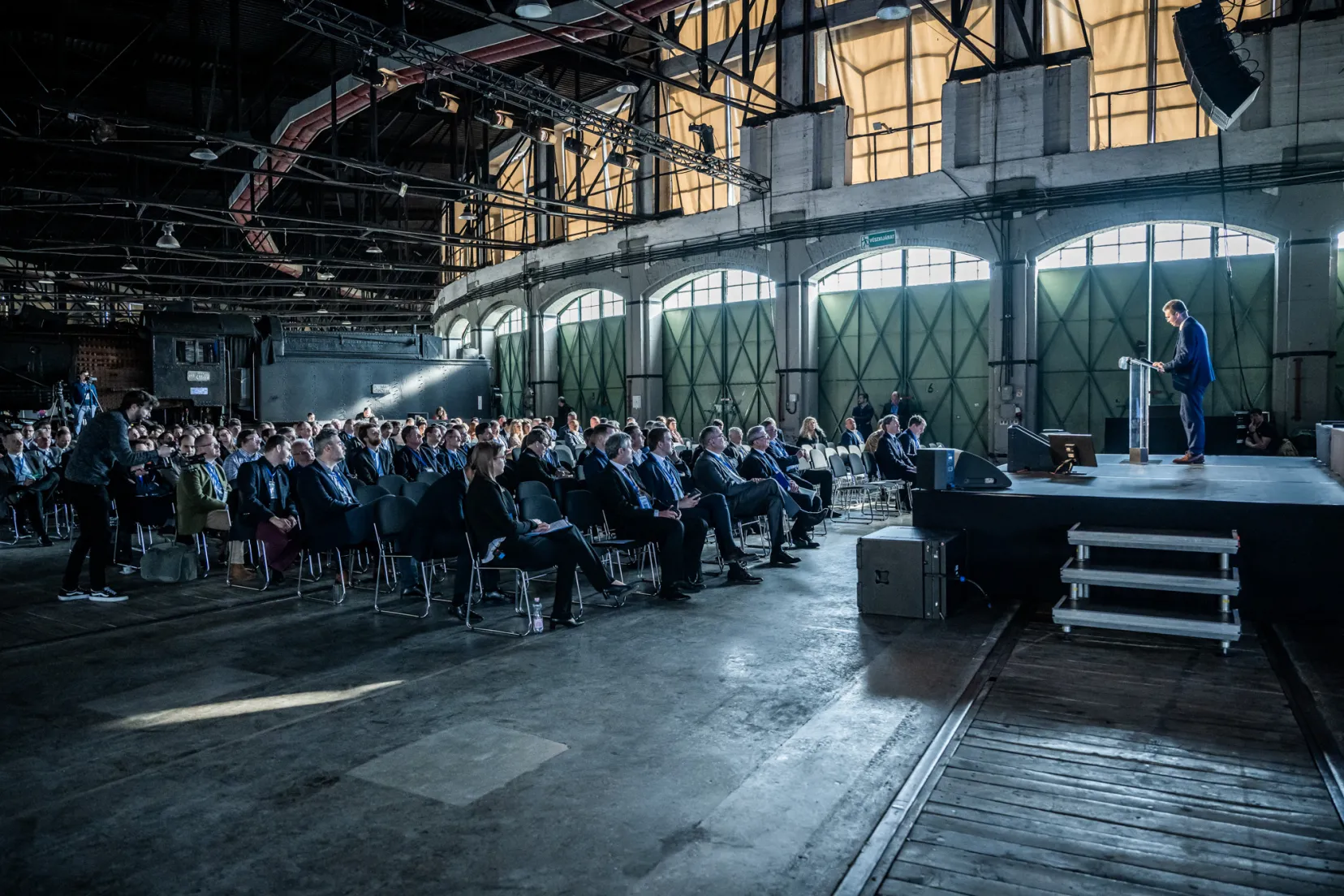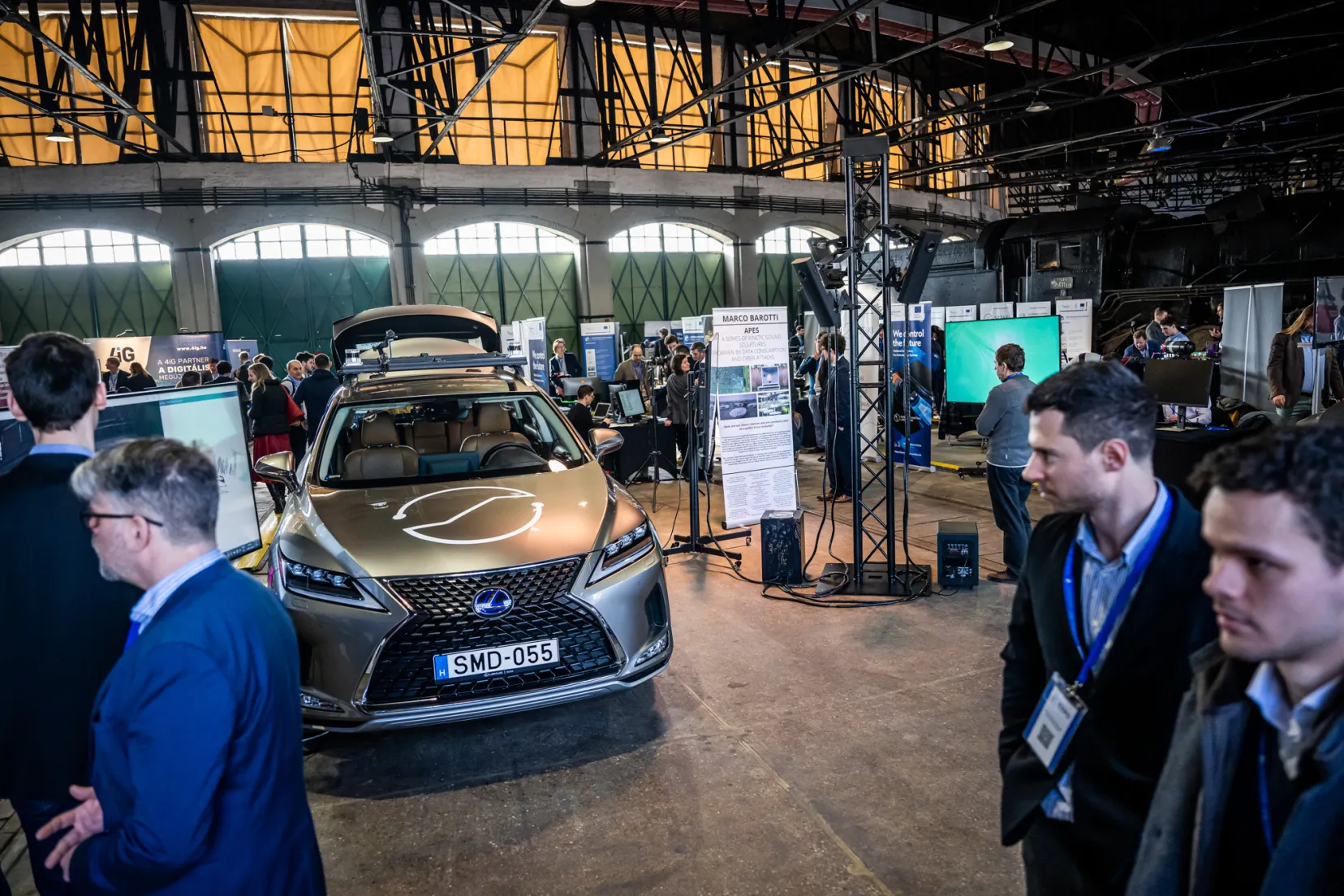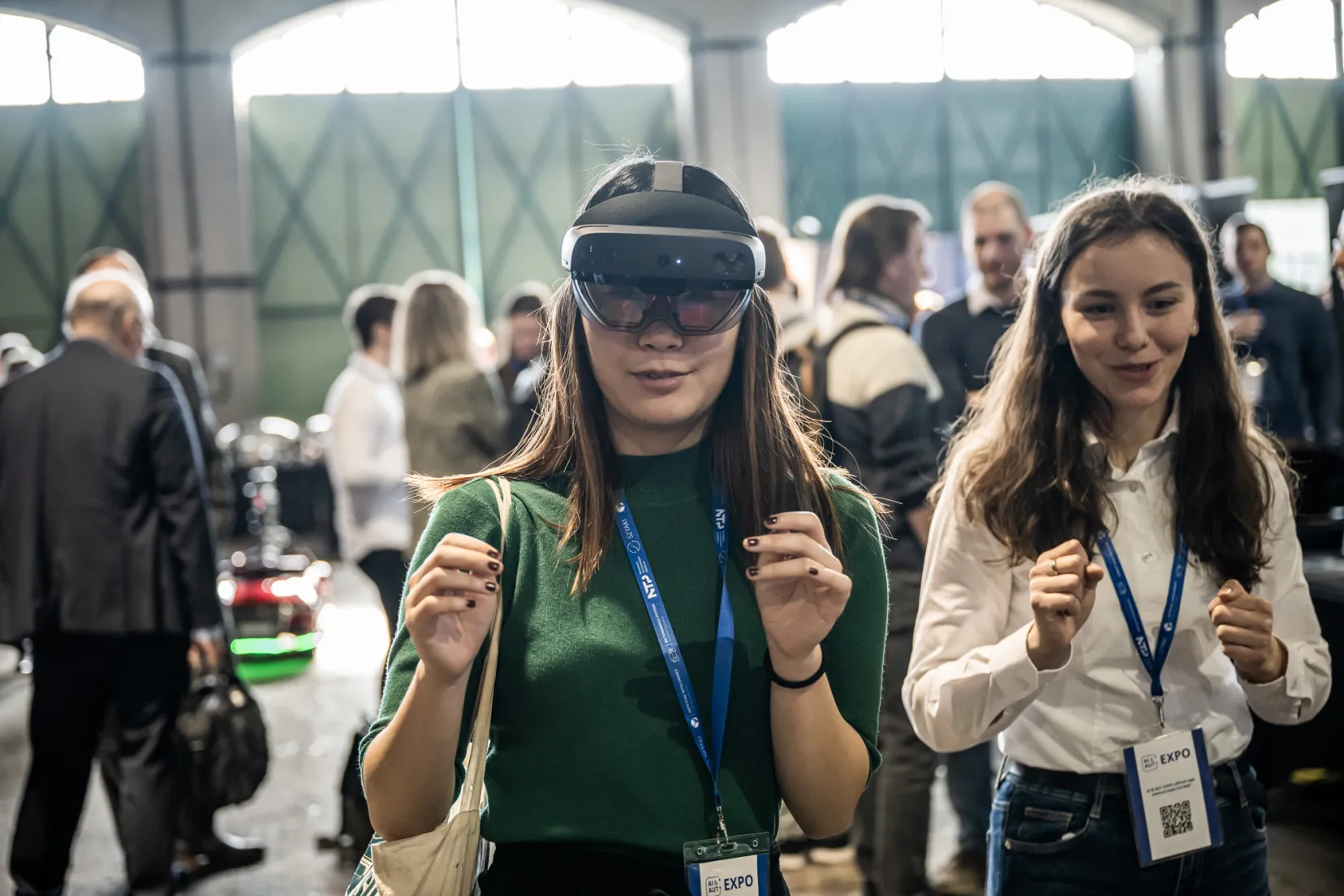SUCCESSFUL AI & AUT EXPO CO-ORGANISED BY MILAB
Co-organised by the Artificial Intelligence National Laboratory (MILAB) and the Autonomous Systems National Laboratory (ARNL) – both coordinated by SZTAKI – and Neumann Nonprofit Ltd., the international AI & AUT EXPO was held between 14-15 February 2023 at the Hungarian Railway Museum in Budapest.
The two-day event featured presentations from over 60 speakers from Hungary and from abroad. The presentations were accompanied by an exhibition, where, in addition to installations and demonstrations by research institutes and universities, visitors could get acquainted with the systems and solutions of MILAB's and ARNL’s industrial partners.
The two main themes of the event, which attracted international interest, were artificial intelligence (AI) and autonomous systems (AUT). The aim was to present a wide range of Hungarian scientific and technical achievements in and related to these topics. The event and related discussions, meetings and other activities have led to the establishment of promising new international and national professional contacts. The organisers hope that these links will help to better embed the Hungarian research and development activities internationally.
The event was targeted at European research organisations, at current industrial partners of the two National Laboratories, at companies involved in AI Coalition, as well as at small and medium-sized enterprises (SMEs) selected by the AI accelerator programme.
The two-day event was opened by Gergely Fábián, State Secretary for Industrial Policy and Technology within the Ministry of Economic Development. In his presentation, he outlined the measures taken and planned by the government to encourage and promote the use of AI and AUT by economic actors. These measures intend to help industries and firms already using these disruptive technologies and SMEs that are just getting acquainted with these.
According to well-established professional and scientific opinions, AI and AUT will inevitably become part of our everyday lives, and will, for example, be used and relied upon by the industrial parks, manufacturing plants and service sectors of the not too distant future. "The aim is to put Hungary at the forefront of the region and of the world in the use of AI technologies," said the State Secretary.
Balázs Hankó, State Secretary for Higher Education within the Ministry of Culture and Innovation, stressed that the government's goal is to achieve a fifty percent share of mathematics, science, engineering and information technology fields within higher education by 2030, i.e., one in two students should choose MTMI courses by that time.
Among the speakers of the opening session were Miklós Maróth, President of the Eötvös Loránd Research Network (ELKH), László Monostori, Director of the Institute for Computer Science and Control (SZTAKI), András Benczúr, Head of MILAB, Péter Gáspár, Head of ARNL, János Levendovszky, Vice Rector of Science and Innovation at the Budapest University for Technology and Economics (BME), and Roland Jakab, President of the AI Coalition.
Referring to MILAB and ARNL, as well as to their research areas, József Bokor, Vice President of ELKH and director of research at SZTAKI said:
"Within the National Laboratory Programme, which was launched two and a half years ago, these two areas have succeeded in creating the critical mass and the group integration needed to start and operate significant research programmes at national level. These two national laboratories have also achieved outstanding results in terms of international integration, industrial links and cooperation between existing scientific schools in universities, research institutes and industry within the country."
"In the current situation, it is particularly important to present and prove the international embeddedness of Hungarian scientific schools, to set forth their links with industry and, last but not least, to highlight the outstanding quality of their results", underlined László Monostori, Director of SZTAKI.
Hungarian universities (e.g., BME, Eötvös Lóránd University, Semmelweis University, University of Szeged, and Széchenyi University) were strongly represented at the event. Three research institutes (e.g. Rényi Institute, Institute of Experimental Medicine, Research Centre for Social Sciences) also participated in the event. The participating institutions included the National Statistical Service and the Hungarian State Treasury.
The success of AI & AUT Expo is also demonstrated by the significant international interest. For example, a large professional delegation from the United Kingdom attended the event, and Mr Paul Fox, the UK Ambassador in Budapest, gave a presentation. In his presentation, he made a strong case for the importance of the themes covered by the event and highlighted the expected economic importance of the area.
The Alan Turing Institute and the AI Hamburg (ARIC) professional and research network were represented at executive level, but also leading researchers from AI Zurich and the Austrian Institute of Technology participated in AI & Aut Expo. The European association Gaia-X, which aims to create a unified European data sharing infrastructure, was also represented at a high level, furthermore held a regional meeting along with the event.
An important part of the event was the trade exhibition. Next to the steam locomotives and old-time railway carriages exhibited at the site, visitors to the event could meet representatives of key players in the Hungarian industry at high-standard exhibition stands. Among the exhibitors were Audi, Bosch Rexroth, Clementine, Continental, 4iG, Nokia and Magyar Telekom.



